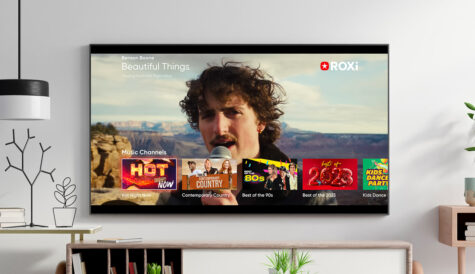Q&A: Simone Sassoli, vice-president, marketing & business development, RGB Networks
![]() Ahead of next month’s ANGA COM in Cologne, Simone Sassoli, vice-president, marketing and business development, RGB Networks, talks about how cable operators can address multiple screens.
Ahead of next month’s ANGA COM in Cologne, Simone Sassoli, vice-president, marketing and business development, RGB Networks, talks about how cable operators can address multiple screens.
 What are the current top priorities for cable operators in relation to investing in video processing?
What are the current top priorities for cable operators in relation to investing in video processing?
Everyone is now looking at multiscreen, and with many of the largest operators already deployed on a small scale, we’re seeing those customers now looking to expand distribution to more subscribers, add channels, reach more devices, and most importantly, add capabilities that generate revenues from their TV Everywhere service, such as multiscreen network-based DVR and ad insertion. As they undertake this next phase, the earliest adopters are finding that some of the original technology deployed for small trials doesn’t scale well. For example, stacking box after box of first-generation software transcoders to grow a multiscreen service not only requires a substantial capital investment, but also adds operational and maintenance complexity, with rack space and power being a significant component of the total cost of ownership.
As we see the next wave of multiscreen deployments taking shape, operators are looking for next-generation solutions that help to streamline their operations and that bring in a monetisation component.
What needs to be put in place to manage the deployment of multiscreen video as cost-effectively as possible, given that it’s complex and that incremental revenue is currently limited?
The multiscreen environment is indeed complex, but with the right tools, technology partners and expertise, operators can meet their budget and project timelines as they deploy new IP video technology. Most importantly, operators new to multiscreen should take advantage of the lessons learned from those who have gone before them. Having worked with many of the top operators around the globe on trials and early deployments, RGB has applied these lessons to our ‘Multiscreen 2.0’ solutions. These next-gen offerings including four things that we think are critical to taking multiscreen deployments to the next phase:
• A modular and very high density transcoding platform to address issues of scalability and efficiency of space, power and other resources
• Highly flexible packaging technology that can streamline your architecture, performing functions in real time, on demand or “just-in-time” for live, VOD and time-shifted applications
• An ABR ad insertion system for generating new revenues through hyper-targeted advertising, backed by extensive ad insertion expertise
• Pre-integration with leading DRM vendors and CDN solutions for live, VOD and nDVR components
Beyond technology, partnerships are very important. In a complex ecosystem, proven integration of best-of-breed components is critical.
To what extent do you expect multiscreen deployments to be simplified by the acceptance of common standards, or are they likely to remain complex and fragmented for the foreseeable future?
An eventual set of common multiscreen standards will certainly simplify deployments, as they’ve done in the traditional cable environment, however we’re still in the early stages and a well-accepted set of standards is still being debated.
HDS, Smooth Streaming, HLS and MPEG DASH continue to battle it out for domination of the adaptive streaming environment, while HEVC tries to make inroads in a world still dominated by MPEG-2 and H.264. Ad insertion standards for ABR are likely the closest to adoption by leveraging existing standards such as SCTE 130, VAST or DART, but it will still take time. In the meantime, operators need to make sure that they choose flexible solutions that can deal with a multitude of interim “standards” and adapt as true standards emerge.
What technology challenges are pay TV operators likely to face as they seek to further monetize TV Everywhere services – for example through advertising – and what solutions are available?
The biggest challenge remains content rights – who can stream what to where and what advertising can be replaced and by whom. Content is still king and content owners often stand in the way of making great technology available for the consumers.
Beyond right issues, as discussed previously, standards continue to be a challenge while the multiscreen environment is still maturing. Until firm standards are established, solutions will be required that can help simplify the array of standards.
Due to the unicast nature of the IP video delivery environment, hyper-targeting of ads can finally be accomplished, giving operators the long-promised benefits of personalized advertising. RGB’s AIM ad insertion solution is a key component of the only complete end-to-end IP-based video processing ecosystem. RGB’s unmatched understanding of ad insertion protocols, stream conditioning and emerging standards, combined with integration with industry-leading ad management systems, provide a powerful monetization platform.
Another potential source of revenue comes from nDVR services. The key to streamlined delivery of time-shifted services in the TV Everywhere environment is efficient packaging of streams into all of the required formats, spanning a number of standards. RGB is the pioneer of just-in-time packaging, an “on-the-fly” technology that saves operators considerable storage costs and bandwidth headaches when delivering to multiple devices. The ability to package on demand also provides operational efficiencies where content cached in the network does not have to be refreshed if there is an evolution of the streaming standard, for example from one HLS version to a newer one. Even better, both versions can co-exist so that legacy devices can be supported without upgrade costs.
To what extent can IP-based video services such as multiscreen be integrated with legacy DVB-C video services?
The first place is going to be for VOD delivery, where you can deliver an adaptive format to the set-top box over the DOCSIS channel. It already happens in home gateways, where you can get some of the content from the Internet and other content from your cable provider. VOD is ideal because of the unicast nature of adaptive bitrate delivery. It is more challenging for live broadcast, where each channel becomes a session – the economics are not quite there yet.
What are you planning to highlight at ANGA COM and what are your expectations of the show?
We’re excited about the upcoming ANGA COM show and the opportunity to highlight our latest ‘Multiscreen 2.0’ solutions. Last month we announced our second generation transcoding platform – VMG Gen 2 – and we know that European operators will be very impressed with the exceptional video quality that it delivers, as well as the flexibility and scalability that it offers to future-proof their networks. We will also highlight tools for monetizing multiscreen services, including next-generation ad insertion and nDVR solutions. Stop by and see us at stand #10.1/V18.



